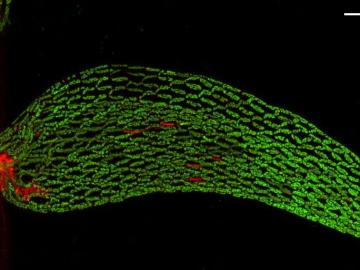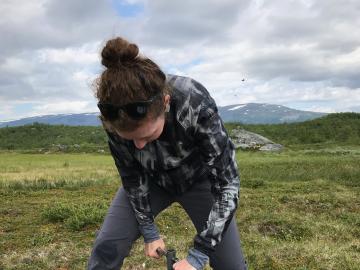
Filter News
Area of Research
- (-) Energy Science (71)
- (-) Materials (26)
- (-) Supercomputing (60)
- Advanced Manufacturing (1)
- Biology and Environment (86)
- Biology and Soft Matter (1)
- Computational Biology (2)
- Computational Engineering (2)
- Computer Science (7)
- Electricity and Smart Grid (2)
- Fusion and Fission (7)
- Fusion Energy (7)
- Materials for Computing (3)
- Mathematics (1)
- National Security (16)
- Neutron Science (12)
- Nuclear Science and Technology (8)
- Nuclear Systems Modeling, Simulation and Validation (1)
- Quantum information Science (3)
- Sensors and Controls (1)
News Type
News Topics
- (-) Advanced Reactors (5)
- (-) Artificial Intelligence (25)
- (-) Clean Water (9)
- (-) Environment (52)
- (-) Grid (28)
- (-) Microscopy (15)
- (-) Summit (29)
- 3-D Printing/Advanced Manufacturing (51)
- Big Data (21)
- Bioenergy (15)
- Biology (12)
- Biomedical (16)
- Biotechnology (3)
- Buildings (25)
- Chemical Sciences (12)
- Composites (12)
- Computer Science (73)
- Coronavirus (17)
- Critical Materials (10)
- Cybersecurity (7)
- Energy Storage (45)
- Exascale Computing (17)
- Fossil Energy (1)
- Frontier (18)
- Fusion (5)
- High-Performance Computing (28)
- Hydropower (3)
- Isotopes (9)
- Machine Learning (11)
- Materials (48)
- Materials Science (46)
- Mathematics (4)
- Mercury (2)
- Microelectronics (1)
- Molten Salt (1)
- Nanotechnology (18)
- National Security (4)
- Neutron Science (20)
- Nuclear Energy (18)
- Partnerships (5)
- Physics (15)
- Polymers (12)
- Quantum Computing (16)
- Quantum Science (16)
- Security (5)
- Simulation (14)
- Software (1)
- Space Exploration (7)
- Statistics (1)
- Transportation (49)
Media Contacts

A novel approach developed by scientists at ORNL can scan massive datasets of large-scale satellite images to more accurately map infrastructure – such as buildings and roads – in hours versus days.

The prospect of simulating a fusion plasma is a step closer to reality thanks to a new computational tool developed by scientists in fusion physics, computer science and mathematics at ORNL.

Liam Collins was drawn to study physics to understand “hidden things” and honed his expertise in microscopy so that he could bring them to light.

To better determine the potential energy cost savings among connected homes, researchers at Oak Ridge National Laboratory developed a computer simulation to more accurately compare energy use on similar weather days.

Researchers across the scientific spectrum crave data, as it is essential to understanding the natural world and, by extension, accelerating scientific progress.

For nearly three decades, scientists and engineers across the globe have worked on the Square Kilometre Array (SKA), a project focused on designing and building the world’s largest radio telescope. Although the SKA will collect enormous amounts of precise astronomical data in record time, scientific breakthroughs will only be possible with systems able to efficiently process that data.

While Tsouris’ water research is diverse in scope, its fundamentals are based on basic science principles that remain largely unchanged, particularly in a mature field like chemical engineering.

Students often participate in internships and receive formal training in their chosen career fields during college, but some pursue professional development opportunities even earlier.

A team of scientists found that critical interactions between microbes and peat moss break down under warming temperatures, impacting moss health and ultimately carbon stored in soil.

Elizabeth Herndon believes in going the distance whether she is preparing to compete in the 2020 Olympic marathon trials or examining how metals move through the environment as a geochemist at the Department of Energy’s Oak Ridge National Laboratory.


